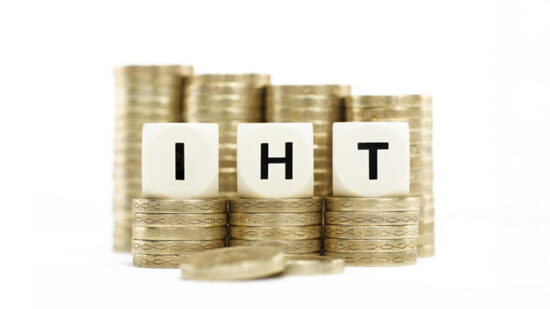Sterling
Despite some poor UK economic releases, Sterling came back strongly against an enfeebled Euro, but lost ground versus the US dollar as data showed that world growth is continuing to slow into the third quarter. From opening levels around 1.5750 last Monday, the Pound fell towards 1.5500 by late Thursday before rebounding a little as it was dragged lower by a Euro hurt by a lack of action from the European Central Bank (ECB). However, it headed towards 1.2800 against the Euro, and looks set to move higher this week.
The Bank of England kept rates unchanged last Thursday as expected, with no more Quantitative Easing for now. They will probably wait and see what effect last month’s increase in QE does before considering any further measures. However it is clear that the UK is caught up in the world recession and is suffering along with the other major nations. It is a question of how bad things are compared to other areas, and clearly the eurozone is in a far worse position, not only economically, but with an inability of the authorities to come to a solution. We feel Sterling will continue to hold steady and make small gains against the Euro, while a 1.5450-1.5750 range should hold against the US dollar in quiet August markets.
US Dollar
Again the dollar finished last week in gold medal position after getting a boost from the lack of action from the ECB. Big things had been promised by ECB president Draghi, but the lack of substance in his press conference last Thursday disappointed the market and investors moved back to the safe haven dollar very quickly. Undoubtedly the ECB’s hands are tied by the by the Germans and the Bundesbank in particular who are against any bond-buying to help Spain and Italy, but while this impasse continues, the dollar will be the currency of choice.
The big release of last week, the July Non-Farm Payrolls gave mixed results. The headline figure came out at 163k, better than analyst’ estimates of 100k, but the previous month was revised down to 64k from 80k in June. The unemployment rate rose slightly to 8.3% from 8.2%. The report was fairly neutral for the markets and had little impact on currencies. The main issue continues to be Europe, and while governments and bankers deliberate and talk the talk, the markets will continue to place their money where it is safe. Actions speak louder than words, and only when we see something concrete will the dollar start to fall. For the week ahead, we see modest gains against the Euro and a range of 1.5450-1.5750 against Sterling.
Euro
It’s always dangerous to play poker with an empty hand. At some stage people will want to see what cards you’ve got. ECB Governor Mario Draghi might do well want to remember that the next time he promises to do ‘whatever it takes’ to support the ailing Euro and the countries in the firing line. After his comments last week, the markets were preparing themselves for some radical new initiatives at the Council meeting on Thursday. It turned out there was nothing new and there were only promises to come up with more measures to support the Euro ‘over the coming weeks’. This was a big disappointment and the Euro fell across the board, with the Spanish and Italian debt yields rising sharply and their stock markets falling more than 4%.
This wasn’t what the market wanted to hear and it’s difficult to see how the Euro will find any strength until some positive action is seen. After the speech, the Euro fell to 1.2140 versus the US dollar and 1.2780 versus Sterling before recovering slightly, and, barring any surprise announcements, we see that trend continuing this week, with a possible test of 1.20 and 1.29 respectively.
New Zealand Dollar
The New Zealand dollar rose for the third week in a row after Standard and Poors (S&P) affirmed the nation’s credit rating and said its outlook is stable. S&P affirmed New Zealand’s rating, citing its fiscal flexibility, resilient economy and policy institutions conducive to swift and decisive policy reform. “These strengths are offset by its high external debt and weak external liquidity,” the company said in a statement. Similar to the Australian Dollar, the New Zealand dollar has appreciated against most of the major developed nations this year, rising 4.9% on a trade weighted basis. This is the third best performance after the Japanese Yen and AUD. While problems persist in Europe and elsewhere, it’s difficult to see this strength eroding in the short term.
Similar to the Aussie, the NZ Dollar continues to trade close to its all time high against Sterling. It has improved from an opening level around 1.9450 to close just above 1.9100. The all time high is just above 1.85, but with no sight of a resolution of the European woes and weak economic growth in the other major nations, the New Zealand dollar looks a good bet for the time being. Look for further minor advances this week.
Australian Dollar
Along with other commodity related currencies, the Aussie continued to power ahead last week as a combination of a high yield and safe haven pushed the currency towards its all time highs against Sterling which were seen in February this year. However this enthusiasm may be tempered on Tuesday when the Reserve Bank of Australia meet to decide whether to leave the highest borrowing costs among major developed nations unchanged (currently 3.5%) or to nudge them lower. Most analysts’ feel they will keep them unchanged, but a move lower could see a sharp short term sell-off in the AUD.
All eyes will be on the Reserve Bank decision this week but even a cut in rates will only provide a temporary pull back in the Aussie. The AUD has advanced 5.4% in the last three months against the 10 most developed nations on a trade weighted basis. This is the best performance of all currencies with the exception of the Japanese Yen. With interest rates still the highest among the major nations, the AUD attraction should remain strong for now, and a retest of the all time high around 1.45 against Sterling cannot be ruled out.
Canadian Dollar
Our last week prediction of a retest of the recent low of 1.5695 against Sterling was certainly proved right as some weak data out of the UK and a flight to quality after disappointing Euro news saw a gradual move down to 1.5490. The CAD also did well against a strong US dollar, touching 1.0002, the strongest level since May. The CAD has appreciated 2.6% this year against nine of its major counterparts and 0.9% against the US dollar. This strength is more down to its role as a safe haven currency rather than a surging economy. Economic releases this week were disappointing, but everything is relative, and compared to some of its other major counterparts, investors prefer the CAD than the alternatives.
While the price of commodities will be a big driver on the CAD, it will be overshadowed in the short term by the continuing need for investors to find a safe home for their funds while the financial turmoil in Europe plays out. Against the dollar, the CAD will continue to trade a tight range, while it should outperform Sterling in the short term as economic woes seem worse on this side of the pond. Look for a retest of the 1.5500 area in the week ahead.
For more currency data and information on how to assist your clients with their international money transfers, please visit the International Adviser Currency Zone powered by Moneycorp.








